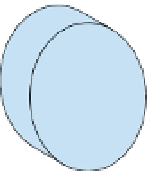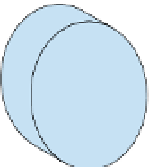Biomedical Engineering Reference
In-Depth Information
the displacements from rest. The pulley is assumed to have no inertia or friction. (a) Write
the differential equations that describe this system. (b) Solve for
)Nand
zero initial conditions. (c) If the input is a step with magnitude 10 N and zero initial
conditions, simulate the solution with SIMULINK.
4.
Consider the system in Figure 13.74, where there are two viscous elements
x
2
(
t
)if
f
(
t
)
¼
10
u
(
t
B
2
,
K
1
is a
translational element, and
K
2
is a rotational element. Let t(
t
) be the applied torque,
x
1
the
displacement of
from rest (i.e.,
when the springs are neither stretched nor compressed). The pulley has no inertia or friction,
and the cable does not stretch. (a) Write the differential equations that describe the system.
(b) Write the state variable equations that describe the system. (c) If the input is a step with
magnitude 3 N and zero initial conditions, simulate the solution with SIMULINK.
M
from rest, and y the angular displacement of the element
J
q
K
1
B
1
R
K
2
B
2
B
2
J
(
t
)
M
1
x
1
FIGURE 13.74
Illustration for Exercise 4.
5.
Consider the system in Figure 13.75, where there are two viscous elements
B
2
,
K
1
is a translational
element, and
K
2
is a rotational element. Let
f
(
t
) be the applied force,
x
1
the displacement of
M
1
and
from
rest (i.e., when the springs are neither stretched nor compressed). The pulley has no inertia
or friction, and the cable does not stretch. (a) Write the differential equations that describe the
system. (b) Write the state variable equations that describe the system.
x
2
the displacement of
M
2
from rest, and y the angular displacement of the element
J
q
K
1
B
1
R
K
2
J
B
2
B
2
M
1
x
2
x
1
M
2
f(t)
FIGURE 13.75
Illustration for Exercise 5.
Continued



























































































